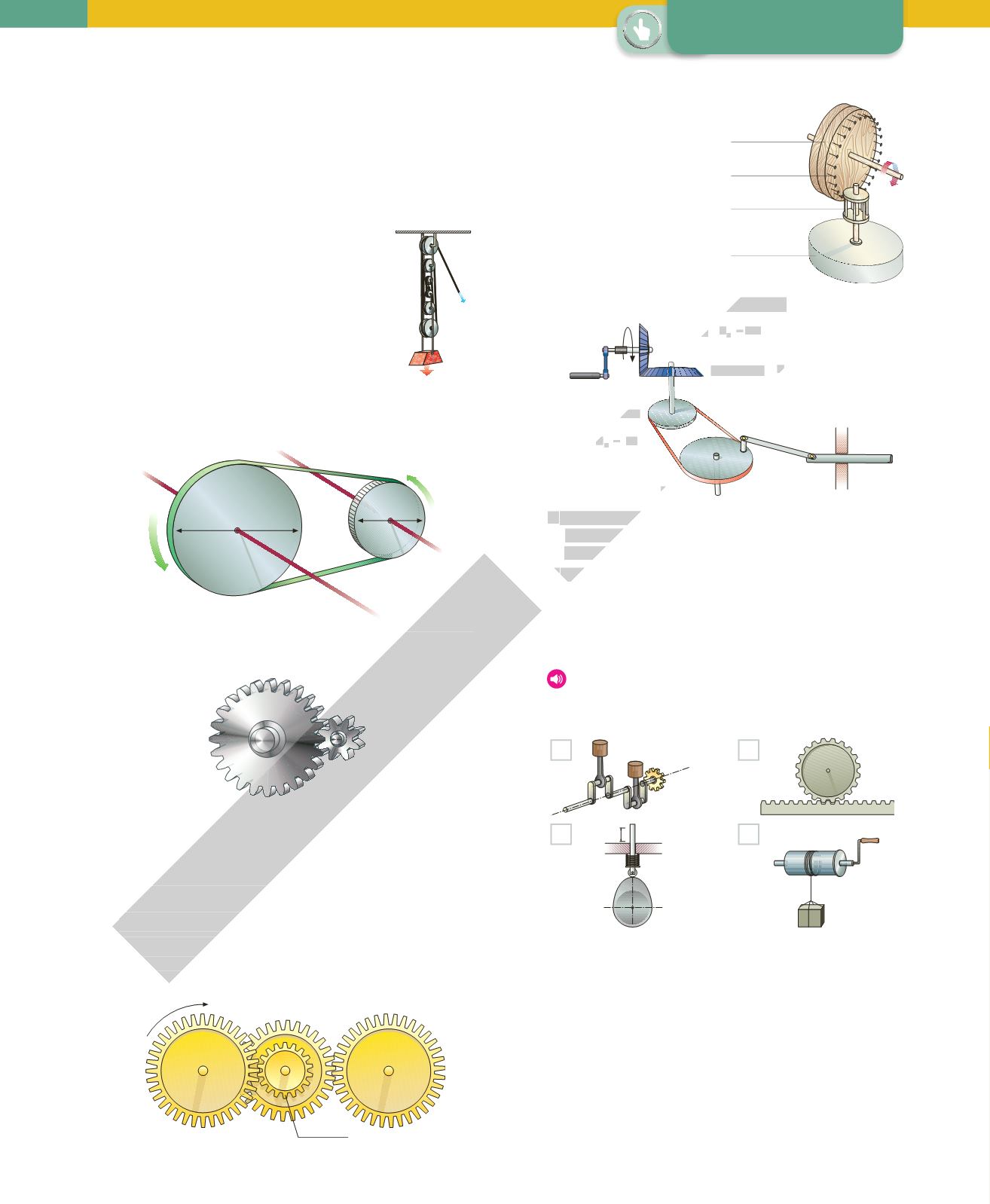
128
46.
A boy who weighs 30 kilograms sits on one end of
a seesaw. On the other end there is a girl who
weighs 20 kilograms. The girl is 1.5 metres from
the fulcrum. How far from the fulcrum must the
boy sit in order to balance the seesaw? How far
away must the boy sit if the girl is 3 metres from
the fulcrum? What conclusion can you make about
the seesaw?
47.
How much force do we need to lift
the load in the picture? If we apply a
force of 30 N, how much weight
could we lift?
48.
In your exercise book, draw diagrams
for the three types of lever.
49.
Study the diagram and the information that it
includes. What is the diameter of the larger wheel?
What is the ratio of transmission?
50.
Study the gear train below. Calculate the ratio of
transmission.
a)
How fast does the larger gear turn if the smaller gear
turns at 60 rpm? Show the direction of the rotation.
b)
If we add another gear between these two gears, will it
change the ratio of transmission? Explain.
51.
Calculate the output speed of the gear train below.
In which directions do gears 2, 3 and 4 rotate? If
the output speed of the wheel at the right is 60
rpm, what is the input speed of the wheel at the
left?
52.
This mechanism is similar
to the wheels of an old-
fashioned mill. What
type of motion does it
transmit? If the gear
wheel turns clockwise
at 60 rpm, how fast will
the wheel turn? Will it
also turn in a clockwise
direction?
53.
Study the following mechanism ...
a)
Label the various parts of the diagram. How does each
part transmit or transform motion? What is the input?
What is the output?
b)
If gear A turns at 90 rpm, how many times will the out-
put crank move in one hour?
c)
Look at gear A in the diagram. In which direction does it
turn? In which direction will gear B turn?
d)
Is this mechanism reversible? Why? / Why not?
54.
Listen and complete the questions. Match the
pictures below with the questions and then answer
them.
a)
Which part provides the _____ motion for the cranks? Is
this a _____ mechanism?
b)
What type of movement does the _____ make? What
force keeps it in contact with the _____?
c)
The pinion is turning at 10 rpm and the _____ is moving
at 60 cm / min. If each tooth is 2 mm, how many _____
has the pinion got?
d)
The crank is 40 cm long and the _____ of the cylinder is
one third that distance. How many _____ will the winch
lift if we apply 240 N?
CONSOLIDATION
N
2
560 rpm
D
10 mm
N
1
70 rpm
200 rpm
Z
1
36
Z
3
30
Z
4
36
Z
2
18
50 kg
gear
28 nails
7 bars
wheel
sprocket A
sprocket B
wheel A
wheel B
Z
A
20
D
A
10
Z
B
30
D
B
15
A
B
C
D
ADVANCE
EDITION


